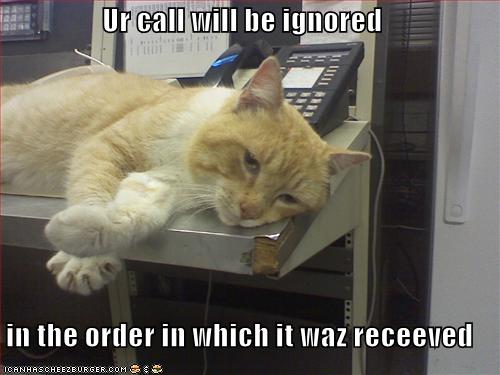Since the advent of smartphones, then the arrival of web 2.0, through Facebook, Twitter and later Snapchat, Instagram, Google Maps and Tripadvisor for reviews, the means of communication have never been so numerous and intense.
If there have never been so many means of communicating, it is clear that we have never heard so many criticisms raised against this excessive evolution of the means of communication. Who has never heard a fifty-year-old protest against Generation Y, always connected, tweeting and posting photos under the dining table, and never concentrating on anything for more than 2 minutes?
But beyond the excesses that exposure to social networks can lead to, what does this hyper connectivity imply in terms of social relationships? Has digital really made it possible to improve communication between individuals and between organizations? This is what we will see right away.
Note: This content initially published in 2012, still relevant in 2023 and republished that same year, and is the 9th chapter in a series of course on Social Media, the summary of which can be found here.
Rationed voice communication
We are witnessing a curious evolution in the means of communication which originally, with the invention of the telephone, were truly made to open up to others and get in touch with them in the true sense of the term, and in a fairly direct way. . When the landline rang, we didn't really know who could be calling us and we responded rushing over Everytime.
Do you have a business and want to regain control of your margins and your business model? Discover my solution Ultimate Business Dashboard which transforms your raw accounting data into performance indicators and a monthly dashboard.
Today, the use of telephones has fundamentally changed. Starting with the fact thatwe no longer respond every time : we filter rigorously according to the moment, and especially according to who is calling us. The mobile phone is no longer a means of speaking face to face with the interlocutor, it has become a server on which we post messages (voice, SMS or chat) while waiting for the correspondent to deign to respond to us, when he can and will want do it well.
And for good reason, if we like receiving text messages so much, it's because we can read and respond to them when we want. Nothing is imposed on us, unlike the telephone call, considered more intrusive.

As if that were not enough, current messaging services have pushed the vice to the point of offering tools – which can be deactivated – and which allow you to find out if our correspondent has read our message. In other words, your correspondent can inform you that he has read your message but does not wish to respond to it at the moment, and all this without telling you in person!
Fact, use of voice, considered today to be very aggressive compared to written messages, is no longer prioritized. This is the first lesson of this over-digitalization, which paradoxically, has extinguished one of the most ancestral means of communication: voice and speech.
An evolution of social networks towards egocentrism and individualism
 A so-called “social” network means by its nature that its members will interact with each other and communicate. However, a simple glance at the way in which social networks evolve tells us that communication in the true sense of the term - that's to say communication between individuals, the one that allows discussion – is increasingly put aside in favor of communication in the strategic and marketing sense.
A so-called “social” network means by its nature that its members will interact with each other and communicate. However, a simple glance at the way in which social networks evolve tells us that communication in the true sense of the term - that's to say communication between individuals, the one that allows discussion – is increasingly put aside in favor of communication in the strategic and marketing sense.
To make it clearer, we no longer communicate WITH others to hear from them and discuss, we communicate TO others around his “self”, in a sort of digital egotrip. They are informed about our personal news, like a public figure or a brand would do to work on its image.
This is what we call personal in marketing. handjob branding. As such, the race for “friends” on Facebook, “followers” on Twitter, Youtube, Instagram and Tiktok, or comments on one’s personal blog, constitutes one of the components of managing our “personal brand”. The more we are followed, the more our ego will be satisfied : we will then be able to loudly proclaim our influence on the very competitive web 2.0 market.
We can illustrate this evolution of social networks with many examples. The most telling is the way Instagram has evolved from a photo editing application to an application for writing your “personal legend”.
In other words, social networks seek above all to flatter the ego, by making us believe that we are taking to the stage of a theater, that of life, and that other users, friends and friends of friends , watch us live with admiration.
Finally, social networks shake the fiber of consumer narcissism. Telling your friends where you are, and posting what you like all the time, fuels the pleasure of publicly managing your digital life like you would manage the communications of a small business.
Which brings us to the conclusion linked to this second point: the use of the social network has therefore mainly oriented towards the individual, and no longer towards communication BETWEEN individuals. A direct consequence of this approach is the depression that social networks can cause, particularly for users who are tired or discouraged by the idea of having to compete with others in terms of the number of friends, photos in heavenly places, etc.
A homogenization of telephones with social networks
 Now that the mobile phone is no longer used for calling but for update your social profiles wherever you are and depending on your personal agenda, communication from one person to another is even more stifled in favor of global communication by group of people.
Now that the mobile phone is no longer used for calling but for update your social profiles wherever you are and depending on your personal agenda, communication from one person to another is even more stifled in favor of global communication by group of people.
Indeed, the massive increase in the number of friends does not technically allow us to speak to everyone, we must therefore “classify” our friends according to defined criteria, as we would classify the clientele of our company by segments in a Customer Relationship Management software. And the classification of its subscribers by segment (close friends, etc.) is a solution which will undoubtedly be exploited more and more by social networks.
The mobile phone has therefore become just a mobile : it follows us everywhere and is mainly used to tweet our news, and less to call or answer phone calls!
Conclusion: businesses focused on consumers’ navels
 It's difficult to know what the next step will be, and what exactly the future trends and behaviors will be on social networks and in terms of communication between people.
It's difficult to know what the next step will be, and what exactly the future trends and behaviors will be on social networks and in terms of communication between people.
But one thing is certain, brands do not hesitate to exploit the vein of navel-gazing among consumers. Focus a web project or mobile application on strengthening the cultural identity of individuals is currently a good way to ensure a revival of your activity, as evidenced by the slew of new digital services which surf on this type of service.
We will nevertheless deplore the fact that communication in the noble sense of the term is somewhat mishandled, despite its modernization and the technological leap that we have been experiencing for years. Fortunately, everyone is free to use the means of communication as they wish, and a tool like Twitter obviously constitutes a revolution in terms of communication, whether for get information, communicate with friends or find new people sharing the same interests.
But we will still try to keep in mind, somewhere in our brain, the rant of the famous quinqua at the beginning of this article, who will never advise us enough to go out for some fresh air with “real” friends, and disconnect from social networks for a bit.
Already in 1979, Mark Knopfler addressed the problem of human incommunication in the communications era in the song Communiqué, taken from the album of the same name, and with undeniably premonitory lyrics, right down to the use of the expression “talking to a wall”, reminiscent of the famous Facebook wall.
We wanna get a statement for Jesus' sake
It's like a talking to a wall
He's incummunicado
No comment to make
He's saying nothing at all
Yeah but in the press release
You know he's gonna come clean
Think what he says
Say what he means
Maybe on a Monday he got something to say
Communication
Communicated
Communicated
Maybe he could talk about the tricks of the trade
Maybe he could talk about himself
Maybe he could talk about the money that he made
Maybe he'd be saying something else
But in the communicate you know he's gonna come clean
Think what he says
Say what he means
Maybe on a Monday he got something to say
Communication
Communicated
Communicated
Well now the rumors are flying
Speculation rife
They say that he's been trying someone else's wife
Somebody at the airport
Somebody on the phone
Say he's at the station and he's coming on the noon
Then we get the story a serious breeze
And a photograph taken in the hall
You don't have to worry with the previous release
Right now, he's saying nothing at all
But in the communicate you know he's gonna come clean
Think what he says, say what he means
Maybe on Monday he got something to say
Communication
Communicated
Communicated
Chapter 10: Social Media Trends After 2014 »
« Chapter 8: Digitalizing the company through its structure and culture






2 Responses
Very good article as always Zizo!
Thank you very much Amani!! 😉